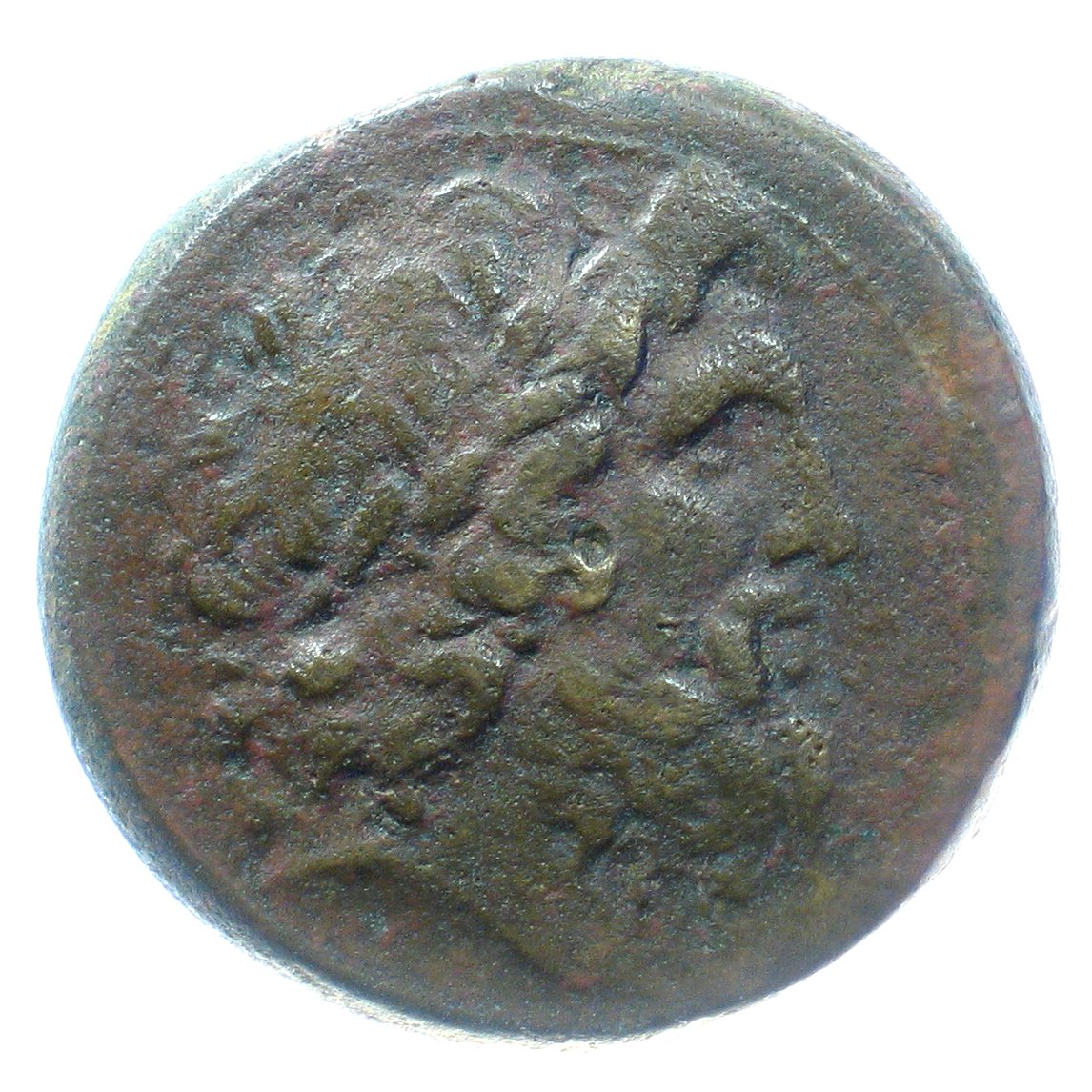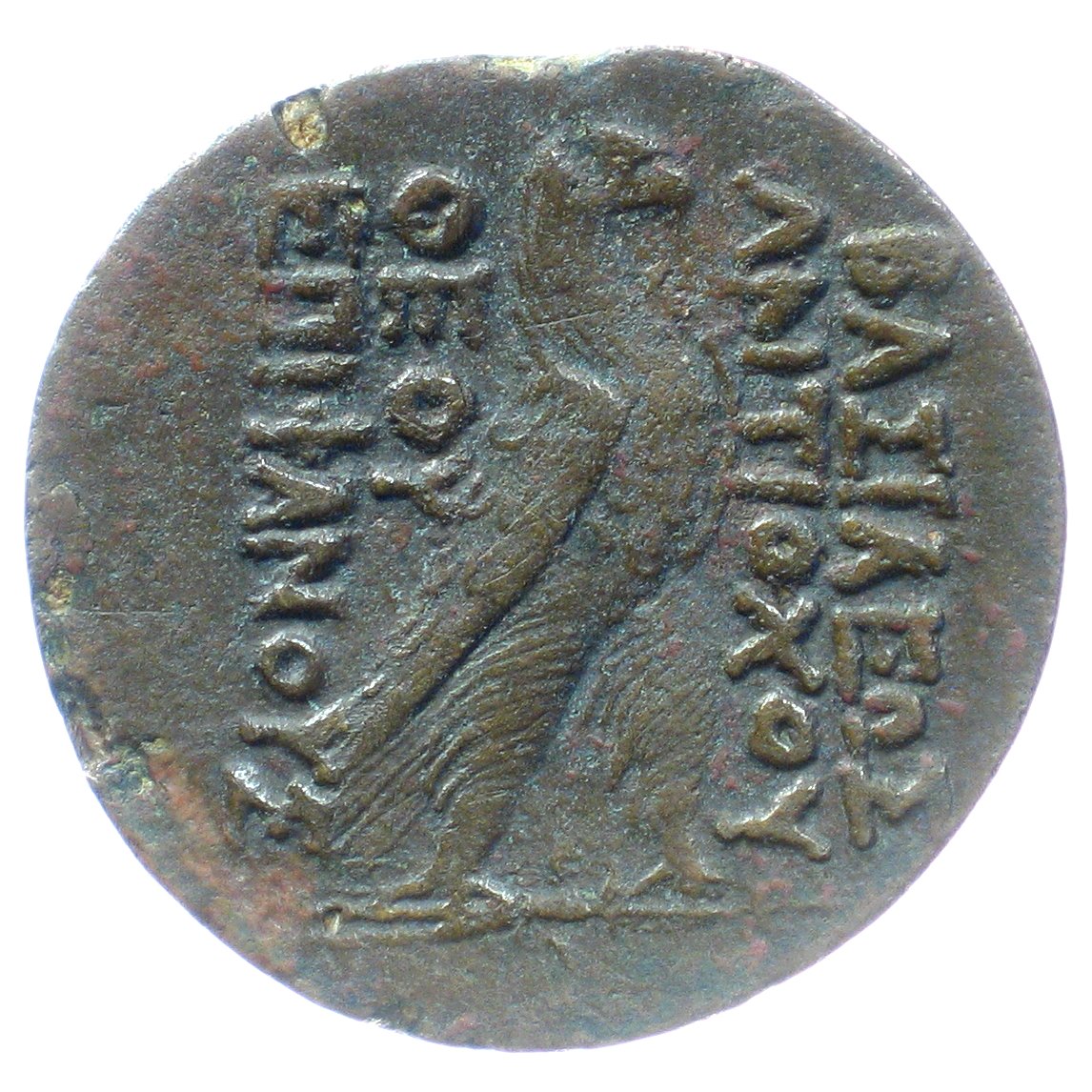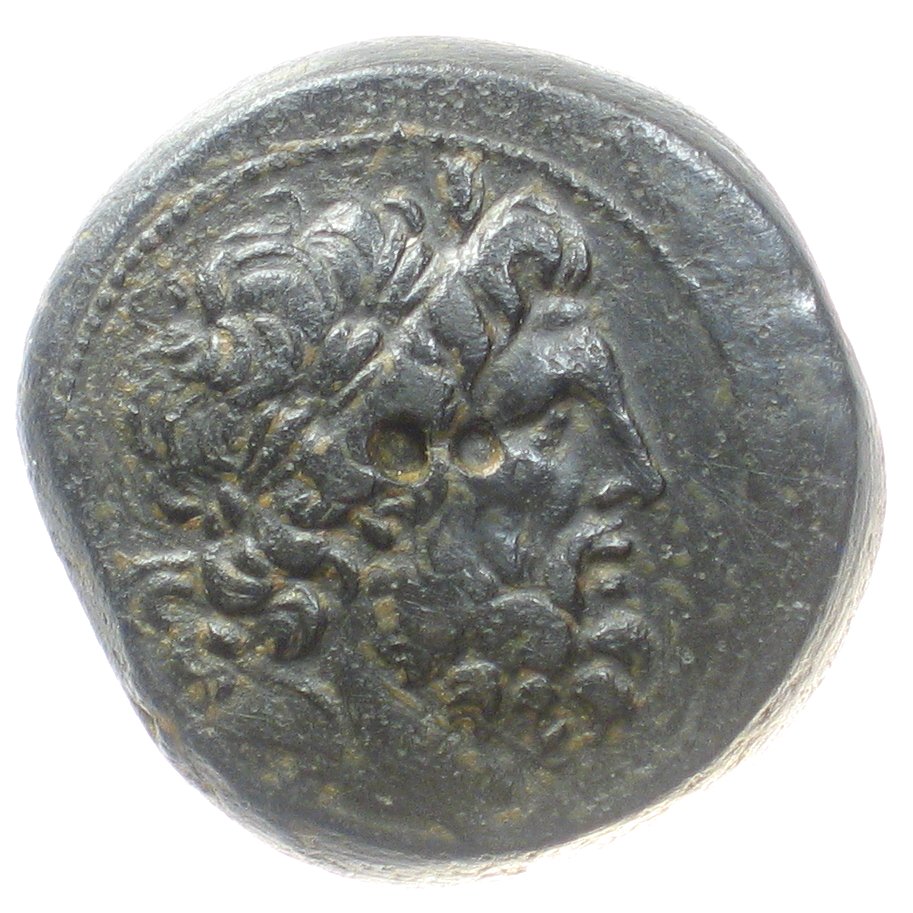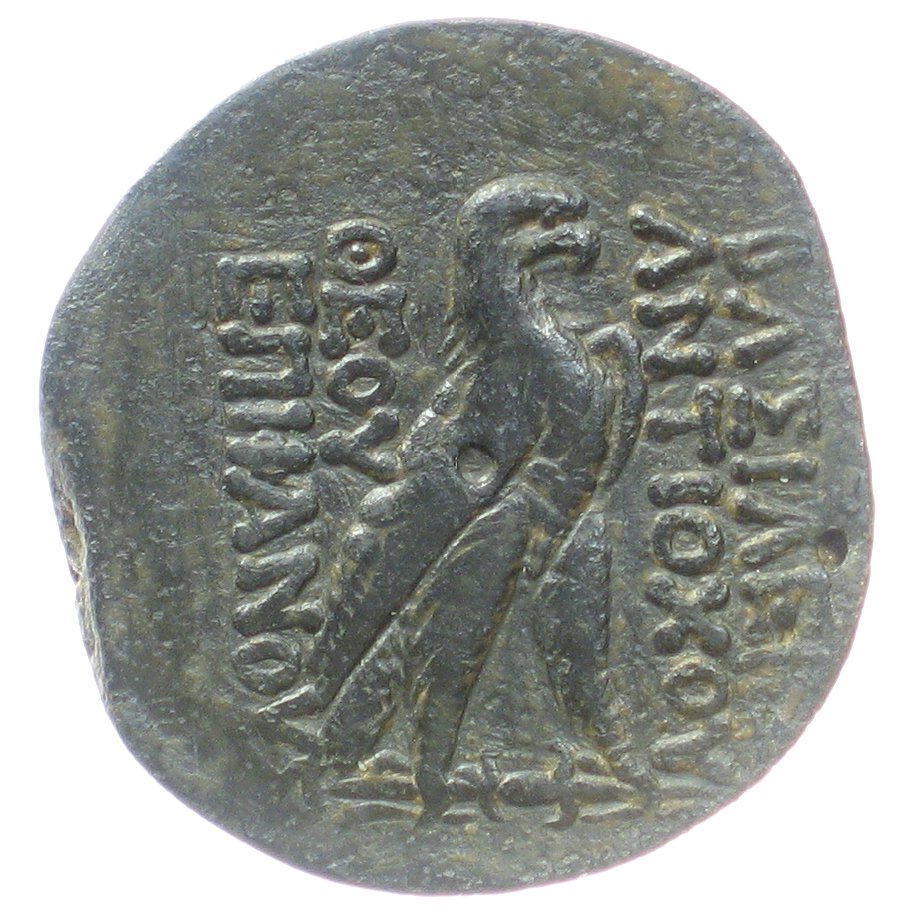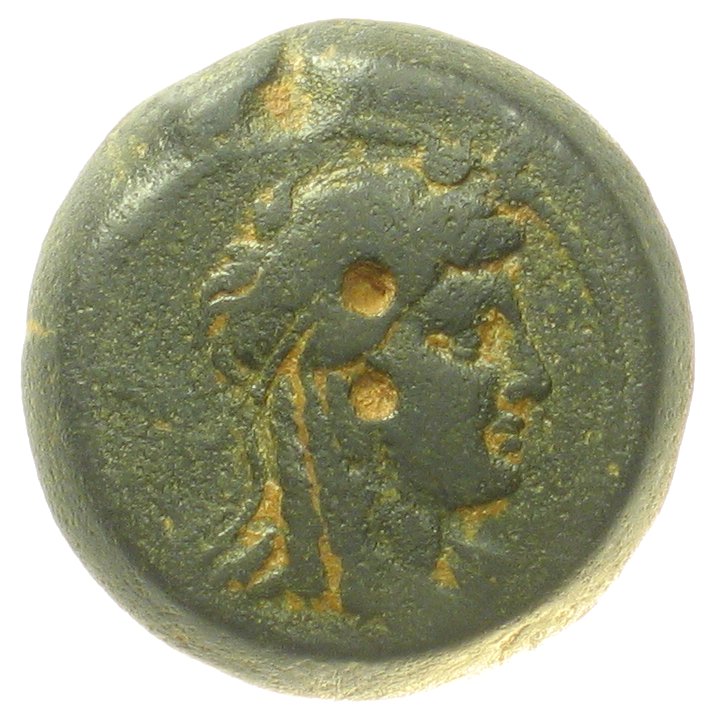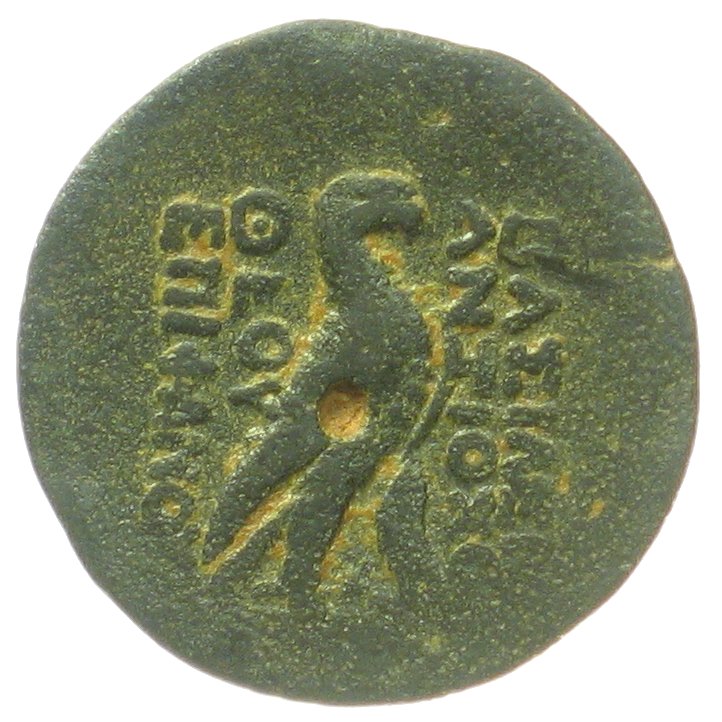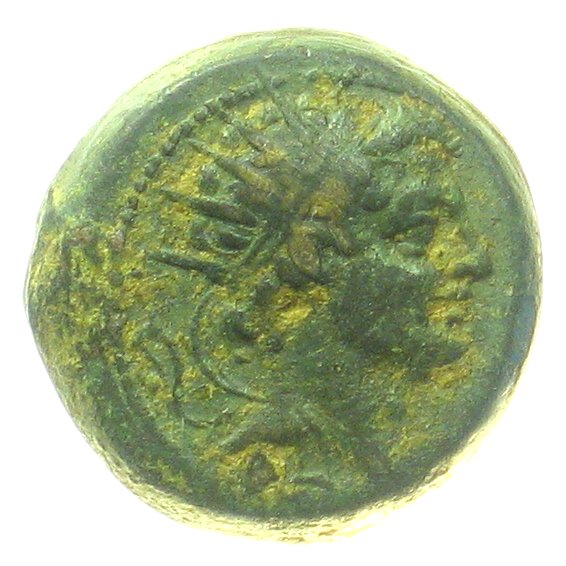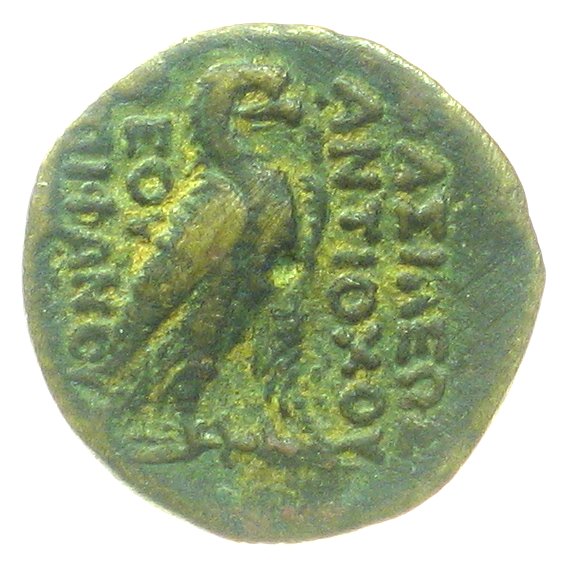Visit the PtolemAE Project Home Page
Ptolemaic Bronze Coin educational and informational center.
Welcome to the Ptolemaic Bronze Coin Denomination Series Page
All photos, content, design, and descriptions are (c)2006-15 by Daniel Wolf
All rights reserved worldwide. No copying, use, or distribution without written permission.
Countermarked examples shown separately at the end of this presentation
All rights reserved worldwide. No copying, use, or distribution without written permission.
Countermarked examples shown separately at the end of this presentation
This denomination series consists a small series of enigmatic style and a single denomination. On most of these types the control, if present, is placed near the tail of the eagle. An additional type not shown here has the control (NK or Phi) above or below the shield. There is very convincing evidence that these coins were issued by Hieron II of Syracuse: the style of laureate Zeus is quite different from the preceding groups (see above), they are found only in Sicily, control placement is unusual, die axes are highly variable, most types have a reverse with a solid circle border, there is no obol denomination, the 'cupped' reverse manufacturing style resembles that of Hieron's portrait bronzes, and there are shared controls (N and PHI) between these coins and some Hieron portrait bronzes. The Zeus portrait style is also artistically similar to the Poseidon portraits of Hieron's smaller coinage with trident and dolphins on the reverse, distinctly Sicilian in style and quite easily distinguished from contemporary Egyptian Zeus portraiture. A paper on this very interesting group of coins is available via a link on the home page of The PtolemAE project. The dating and duration of issue for this series is problematic, beginning no earlier than 275BC but terminating at a time that is yet to be determined.
|
||||||||
  28mm - 17.1gm none - Sv610 Type I - Dotted reverse border Egyptian Style |
  28mm - 17.1gm none - Sv610 Type II - Solid reverse border Egyptian Style |
  28mm - 17.1gm none - Sv610 Type III - Circle reverse border Sicilian Style |
  28mm - 17.1gm N Below Shield - Sv620 Sicilian Style |
  28mm - 17.1gm N Near Tail - Sv619 Style of Sv620 |
  28mm - 17.1gm N near tail - Sv619 Type I - Dotted reverse border Hieronian Style |
  28mm - 17.1gm N - Sv619 Type II - Circle reverse border Hieronian Style |
  28mm - 17.1gm A near tail - Sv615 Hieronian Style |
  28mm - 17.1gm PHI - Sv623 Hieronian Style |




















































































































































































































































































































































































































































